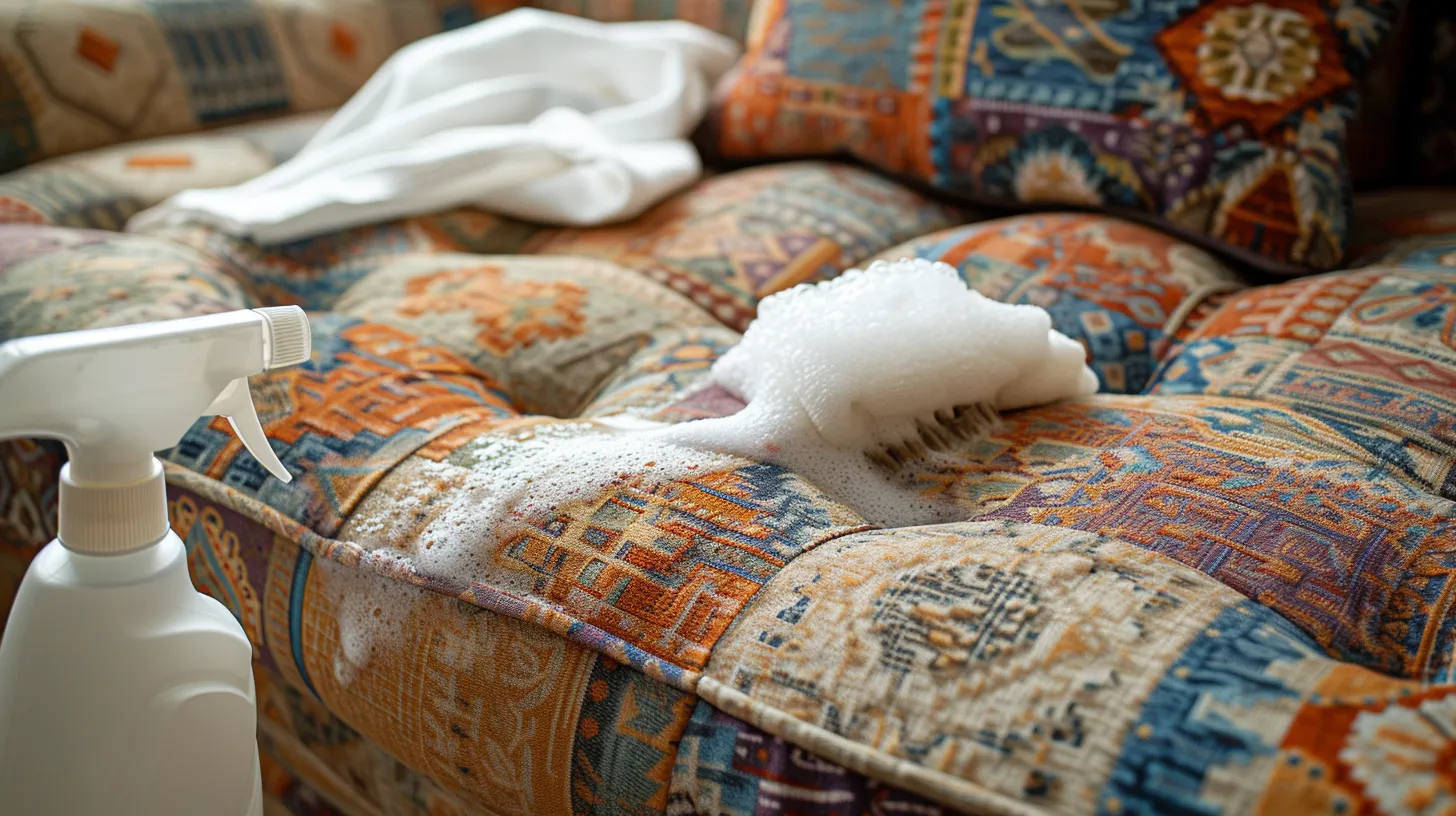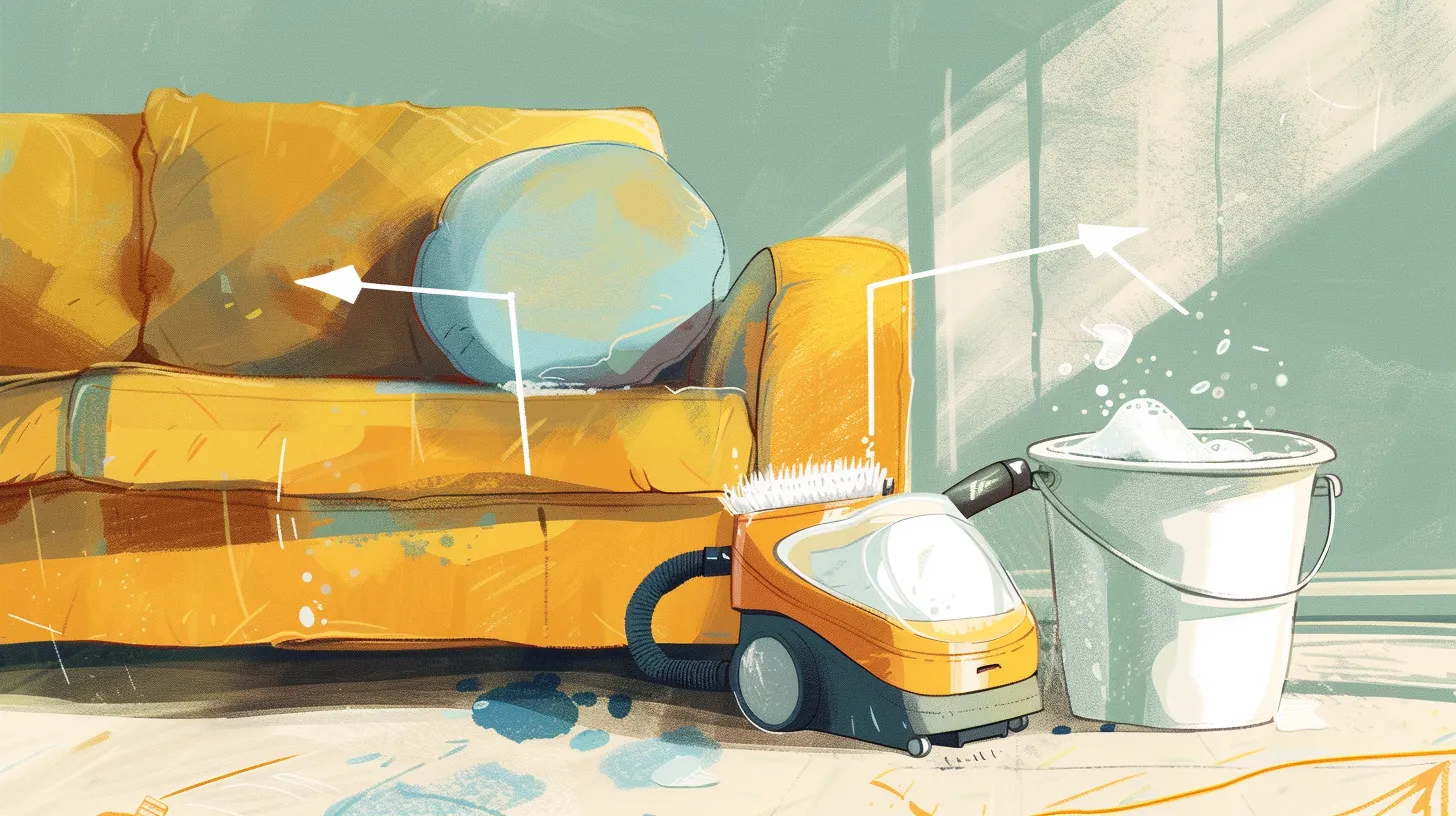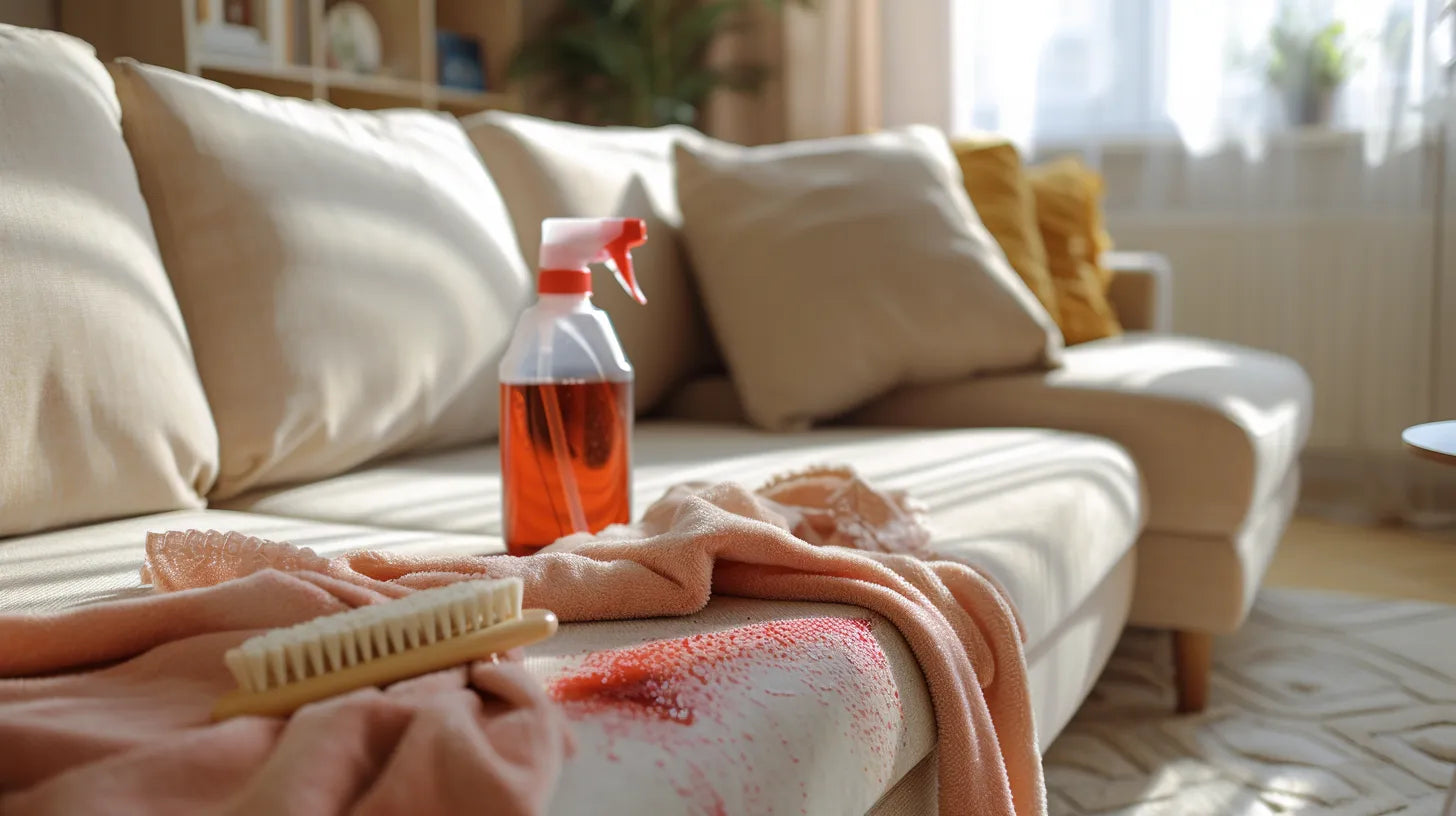In the realm of upholstery maintenance, cleaning a couch cushion is a task that requires precision, understanding, and adherence to specific guidelines to ensure the longevity and aesthetic appeal of the furniture.
The initial step involves a thorough examination of the manufacturer's tag to identify the fabric code, which dictates the appropriate cleaning method. This foundational knowledge sets the stage for a meticulous cleaning process, encompassing vacuuming, spot treatment, and careful drying methods.
However, the nuances of each step, tailored to the type of upholstery, offer a depth of technique and consideration that can significantly impact the outcome. Engaging in this discussion promises insights into the art and science behind effective couch cushion care, revealing strategies that go beyond the surface-level cleaning methods commonly employed.
Vacuum the Upholstery
To effectively remove surface debris from couch cushions, begin by utilizing the upholstery attachment on your vacuum, moving in short, overlapping lines to ensure a thorough clean. This method is pivotal for lifting and eliminating dust, pet hair, and other particles that accumulate on the fabric, contributing significantly to a clean and hygienic environment. The upholstery attachment is designed to gently yet effectively clean delicate surfaces without causing damage, making it an ideal tool for this task.
For areas that are more challenging to reach, such as the crevices between cushions and the narrow spaces underneath them, the crevice nozzle becomes an indispensable tool. It allows you to target these hidden spots where dust and debris tend to accumulate unnoticed. By ensuring these areas are not overlooked, you maintain the overall cleanliness and hygiene of your couch.
To enhance the cleaning process, especially for removing pet hair, consider wearing rubber gloves. Gently running your gloved hands over the upholstery can loosen and lift hair, making it easier for the vacuum to pick up. This step is particularly beneficial for homes with pets, where hair can become deeply embedded in the fabric. Through these combined efforts, your couch will not only be free of surface debris but also maintained in a condition that supports a hygienic living environment.
Treat Any Stains

Upon discovering stains on your couch cushions, selecting the appropriate stain treatment based on the type of stain is crucial. Begin the process by gently blotting the stain with a microfiber cloth. This initial step is important to avoid spreading the stain further into the fabric. For tough stains, such as those from pet messes or urine, consider using enzyme-based cleaners. These specialized cleaners work by breaking down the stain's molecules, making them easier to remove. However, it's important to note that multiple applications may be necessary for the complete removal of stubborn stains.
Always adhere to the fabric care instructions provided by the manufacturer when treating stains on couch cushions. This precaution is vital to prevent damage to the fabric during the stain removal process. The use of inappropriate cleaners or techniques can lead to irreversible damage, such as discoloration or weakening of the fabric. By following these guidelines and using the correct stain treatment, you can effectively tackle even the most challenging stains, ensuring your couch cushions are both clean and well-maintained.
Wash the Upholstery

After treating any stains on your couch cushions, the next step involves washing the upholstery to ensure a thorough clean. Begin by creating suds using dye-free dish soap and warm water, a method effective for both cushion covers and fixed upholstery. This mixture is gentle yet efficient for most fabric types. Apply the suds to the fabric with a soft brush, targeting the entire surface area but focusing on any areas that may require extra attention. It's crucial to avoid soaking the fabric, as excessive moisture can damage the upholstery and prolong drying time.
Once you've gently brushed the upholstery, wipe the fabric with a clean, damp cloth. This step is essential for removing any remaining dirt and soap residue, ensuring that the fabric is not left with any soapy film that could attract more dirt. After cleaning, allow the upholstery to air dry completely. This natural drying process is vital to prevent any moisture-related issues and ensures that the couch cushions are fully dry before being used again.
For deeper cleans, consider using an upholstery cleaner or mild detergent specifically designed for fabric care, and explore options like spot clean or steam cleaning for more persistent issues.
Drying and Fluffing

Ensuring couch cushions are thoroughly air-dried is crucial for preventing mold or mildew growth and maintaining the overall integrity of the upholstery. After washing, it's essential to adopt effective drying techniques to safeguard the cushion's comfort and longevity. Begin by using towels to gently press against the cushions, effectively absorbing excess moisture. This step is vital in accelerating the drying process while protecting the fabric from damage.
Once the majority of the moisture is removed, allow the cushions to air dry completely in a well-ventilated area. This might take several hours or even a full day, depending on the environmental conditions and the cushion's material. It's imperative to ensure the cushions are entirely dry before replacing any covers to prevent damage and preserve the cushion's quality.
In addition to drying, regular fluffing and plumping of the cushions are recommended to maintain their shape and comfort. This simple yet effective practice not only rejuvenates the cushion's appearance but also contributes to its durability. Through proper drying techniques and regular fluffing, you can extend the life of your couch cushions and maintain their aesthetic appeal.
Maintenance Tips
To maximize the longevity and preserve the aesthetic of your couch cushions, implementing regular maintenance routines is essential. Regular rotation of cushions is crucial to prevent uneven wear and maintain their shape. This practice ensures that no single cushion bears the brunt of continuous use, thus extending their lifespan.
Exposure to direct sunlight can be detrimental to the fabric of your cushions, leading to fading and discoloration. It's advisable to position your couch in a way that shields it from prolonged sun exposure. Furthermore, fluffing and plumping cushions frequently not only maintains their comfort but also their appearance, keeping them looking full and inviting.
Armrest covers can serve as a protective barrier for the arms of your couch, safeguarding them from wear and tear. These covers can be easily removed and washed, offering an additional layer of protection.
Adhering to the manufacturer's cleaning guidelines is paramount for the proper care of your couch cushions. Whether it involves washing fabric cushion covers, using a spot cleaner, detergent, steam with upholstery attachments, or a water-based cleaner, following these guidelines ensures that the cleaning methods used are suitable for the material of your cushions, thus preventing damage and maintaining their quality over time.










